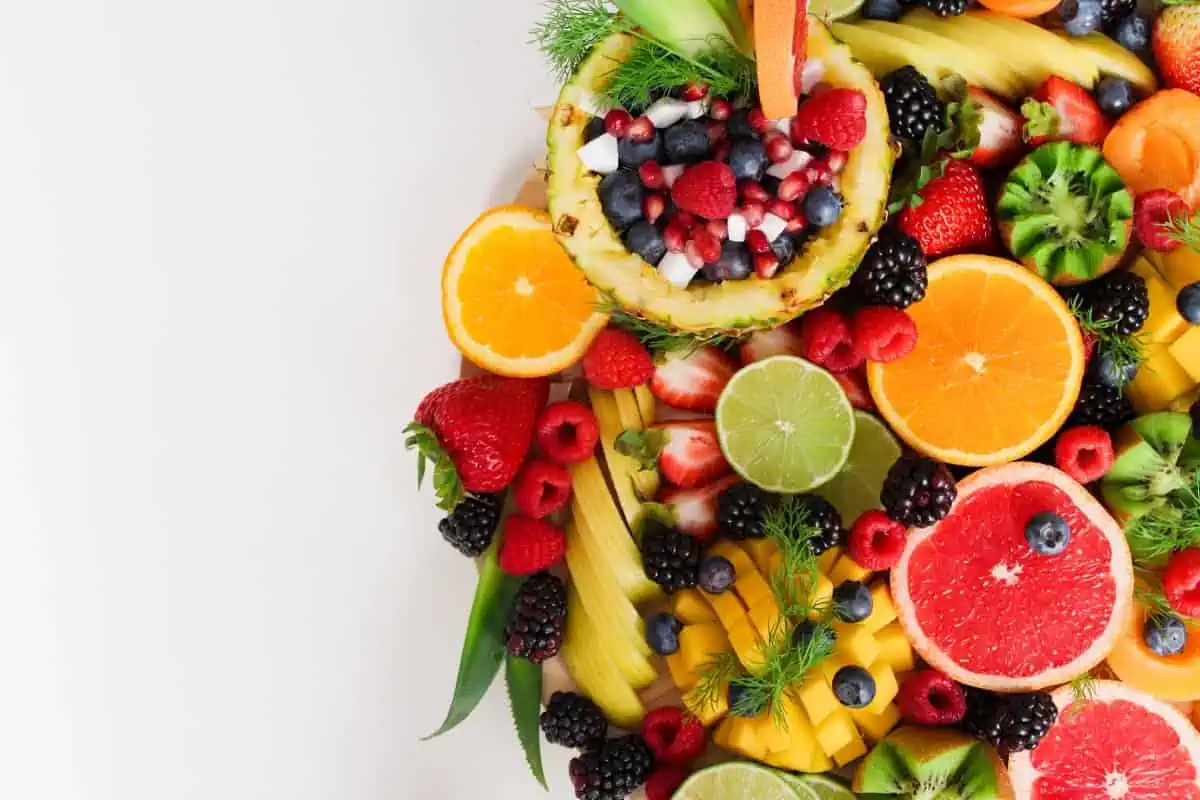Sattvic foods are the choice of many yogis, and have been for thousands of years. So if you are wondering how to align your body with nature and to find purification that matches that of the ancient seers and spiritual seekers, then it is time for you to look toward a sattvic diet.
The Sattvic diet is also known as the yogic diet as it follows ancient ayurvedic beliefs about cleansing the body and mind to be in harmony with the spirit. This can help one deepen their yoga practice and even to commune with divine oneness.
Beside the physical health benefits that the sattvic diet boasts, there is also a reason to eat sattvic food to increase spiritual awareness, remove distractions from the mind and have better mental focus. Let’s look a little deeper into what food to eat and which plant foods to avoid to fully embody the power of the sattvic yoga diet.
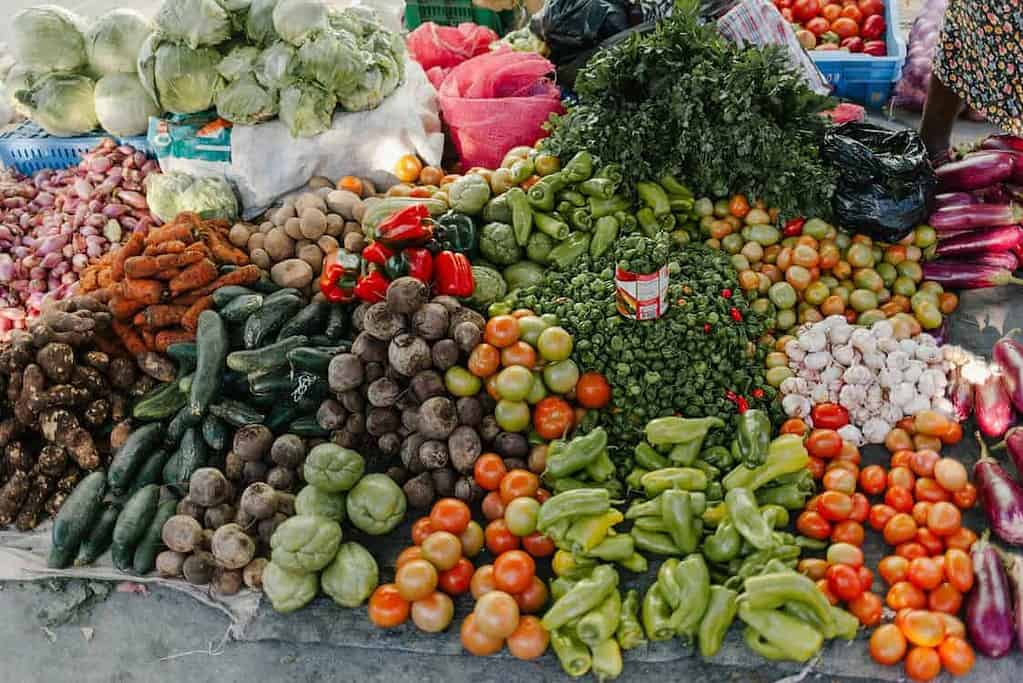
Contents
What is a Sattvic Diet?
A sattvic diet is a plant-based diet commonly known as the ‘yoga diet’ because it is followed by many yoga devotees, practitioners and other spiritual seekers. It originated in the ancient school of Ayurveda (meaning ‘life science’) as a way to create health and balance in the body.
In brief, the sattvic diet is a vegetarian diet that includes many healthy foods. It is mostly a plant-based diet (vegan) with a few exceptions of dairy products such as ghee and yogurt. A sattvic diet will avoid foods that are overstimulating for the mind or body (such as caffeine), while also leaving out excessively processed foods that lead to lethargy.
Studies have shown that plant-based diets assist in weight loss, reduce the risk of heart disease and create overall vitality in the body. After all, you are what you eat.
Those who follow the sattvic diet as part of their yoga practice will often claim that the body is a temple. By nourishing your physical body with the right choice of nutritious foods, you are also creating a sense of harmony in the mind and spirit too.

The Three Gunas
Yoga and Ayurdeva are based on the concept of three ways of being. These are known as the three gunas: Tamas, Rajas and Sattva.
These are three qualities that are not only present in our foods, but also in nature, the way we move through life and the thoughts that flow through our minds.
According to the ayurvedic principles, certain vegetables and food groups fall under these three categories of gunas. Here is a brief overview of the three gunas and the kinds of food that are included in each category.
Tamas
Tamas means inertia, darkness and dullness. It is a state of dormancy, heaviness and inadequate movement. When we sleep, we are in Tamas. In nature you will see the quality of Tamas in a resting seed buried deep in the darkness of the earth.
If you lead a life of Tamasic qualities, you will feel heavy in your body, mind and spirit, you may be oversleeping, overeating fatty fried foods, and eventually, your entire system will feel lethargic. Tamas is also a state of depression in the mind, as it is connected with a lack of purpose, lack of joy and lack of lust for life.
Tamasic Foods
Foods with tamasic qualities are those that are impure, dead, or old and rotten. They are the kinds of foods that cause heaviness and laziness in the body, mind and spirit. If you eat tamasic food you will experience a lack of motivation, dullness and overall negativity.
Some Tamasic foods are:
- Alcohol
- All animal flesh
- Chemicals, preservatives and artificial sweeteners
- Barbecued, burnt or smoked foods
- Deep fried foods
- Frozen foods
- Leftovers
- Refined sugar
- Microwaved food
- Any food that is not fresh (ie. preserved food over 1 year old)
- Mushrooms, pumpkin and overripe fruits
Rajas
The opposite to Tamas is Rajas, which means activity and movement. It is when the seedling grows from the earth and starts to make its way toward the sunlight.
This is the state of stimulation and excitement which is much needed in life, but it can often lead to a state of excess and overindulgence. When too much rajas is consumed, stress and overstimulation can be created, leading to anxiety or burnout in the mind and body.
Rajasic Foods:
Rajas foods are those that increase energy in the body. Even though this is good in small amounts, excess rajas will create a stress overload over time.
Some rajasic foods are:
- Some dairy products including fresh cheeses, cottage cheese, yogurt and eggs
- All fermented foods (miso, molasses)
- Salt and vinegar
- Sour foods
- All caffeine (including cacao, chocolate, coffee and caffeinated teas)
- Some spices: asafoetida/hing, cayenne, chili pepper, fenugreek, garlic, or too much of any spice
- A few vegetables including eggplant, onions, capsicum, leeks, chilli, potatoes, radishes, sea vegetables, sprouts, tomatoes
- Some legumes including kidney beans, navy beans, pinto beans and red lentils
While these foods are still considered healthy foods, it is best to eat them in small amounts and balance out their energies by incorporating them into a sattvic diet.
Sattva
Although rajas is a much needed state for creating action and energy in your life, and tamas is important for ensuring rejuvenation and rest, in the end, it is all about finding the perfect balance. This balance is known a Sattva.
Sattva is a fine mixture of balance and harmony. A sattvic state is when the seedling has become a wonderful flower and it unfurls its petals to simply soak in the beauty of the world around it. It is resting in active awareness.
If sattva rules your life, it will feel light, free, peaceful and serene. You will feel grounded in the moment, yet expansive too. It is a state of true health and balance in the mind, body and spirit.

Sattvic foods
A sattvic diet will bring balance and harmony to the body. This is because vegetarian diets are abundant in nature, the foods are alive and it is the kind of diet that can make you make your body feel vibrant.
A sattvic diet includes eating whole grains, whole foods, pure fruit, juice, vegetables, nuts and seeds. It is best when these foods are harvested fresh, are organic, locally grown and in season. Following sattvic eating habits means to align your diet with the flow of nature.
Naturally, any kind of sattvic diet will assist in weight loss, but only until one’s ideal body weight is reached, as this is about eating the energy that feels right for your body, mind and soul.
The following foods are considered to be sattvic foods:
- Sprouted whole grains – brown rice, barley, amaranth, bulgur, barley, millet, quinoa, wild rice, etc.
- Whole grain bread
- Fresh fruit
- Fresh fruit juices
- Fresh land and sea vegetables – beets, carrots, celery, bok choy, cucumbers, sweet potatoes, and cabbage.
- Most legumes
- Raw organic honey
- Nuts – almonds, walnuts, pistachios, hazelnuts, cashews, brazil nuts
- Seeds – chia seeds, flax seeds, pumpkin seeds, sunflower seeds
- Dairy – milk, yogurt, cheese, vegan milks like almond milk, coconut milk, oat milk (not soy)
- Ghee (clarified butter)
- Some fats and oils: olive oil, sesame oil, red palm oil, flax oil, ghee, etc
- Sattvic spices and herbs include basil, nutmeg, cumin, ginger, coriander
- Coconut oil and coconut milk
- Herbal teas
Benefits of following a Sattvic Diet
The nutrient dense foods that make up sattvic diets have many health benefits.
Rich in good fats such as olive oil, coconut oil and ghee, you will be eating many good essential fatty acids for supporting heart health.
Vegetarian diets have also been extensively studied to show their anti-inflammatory effects on the body. This shows us that eating a vegetable rich diet can reduce risk of heart disease, diabetes and other chronic illnesses.
As well as eating for the body, a sattvic diet is also about eating for the mind. When you consume plants that are alive, you are feeding the cells of your body with fresh energy that is a part of the earth.
Sattvic diets also claim to create more peaceful meditations, focus, and clarity in the mind, which is why this style of eating has lasted over hundreds and thousands of years amongst those on a yogic path.
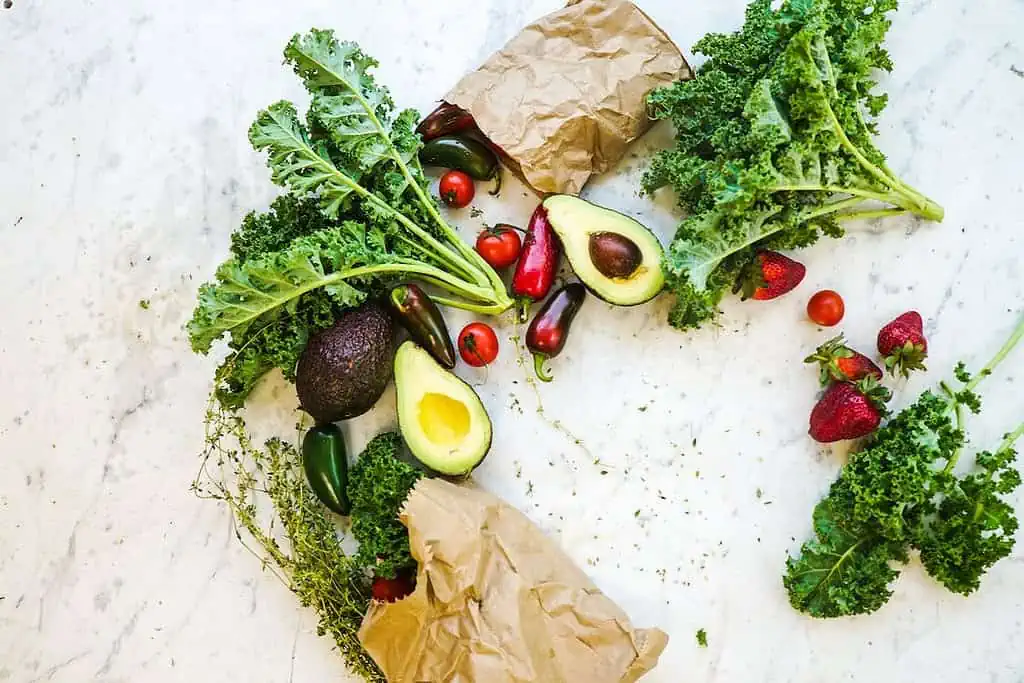
Why do you need to avoid processed foods?
Non-Sattvic foods such as processed foods, fried foods (french fries, takeaway fast food), white sugar or other artificial sweeteners are the kinds of foods that lead to heart disease, and other chronic disease states.
Alhough they make for a quick ‘feel good hit’ and the sugars may make your mouth drool, the long term effects create exhaustion and lethargy in the body. Diets high in sugars and saturated fats such as those in fried pastries and other fast foods, create a large stress load on the body. They create extra work for the liver to detoxify the body, they create an increase in body weight and decades of scientific research show that sugar creates negative health effects on the body, mind and behavioral patterns.
Any ayurvedic practitioner will contribute an excess of rajasic and tamasic foods to chronic disease and will encourage a transition to a sattvic diet and lifestyle for optimum health benefits!

How to Incorporate Nutritious Foods and Transition to a Vegetarian Diet
Sattvic foods should always be freshly prepared, and usually only lightly cooked, making them quick and easy to incorporate into a daily diet.
To include the whole range of plant foods such as whole grains, nuts, seeds, fruits and vegetables, take a look online for some vegan and vegetarian diet recipes! There are plentiful resources online, or you can pick up a veggie cookbook.
Fruit salads, smoothies, and whole pieces of fruit are great breakfast choices. Add in a handful of nuts and seeds for some protein.
For a bigger and more filling meal, choose a base of whole grains, with some fresh vegetables or lightly steamed vegetables on top. Drizzle a dressing over your salad with olive oil and tahini and sprinkle on a few delicious additions such as sesame seeds. This is an easy throw-together style meal!
The most important thing to consider when following a sattvic diet is to be prepared. Having a meal plan for the week ahead will make it easy to follow your sattvic plant based diet wherever you go.
Shop at a local farmers market on a weekly basis, pick up seasonal produce and stock your pantry with sattvic herbs and spices.
Extra Tip: Leave all incompatible foods behind (i.e. refined grain products or sugars) because if they are not in your kitchen, you will not be tempted to eat such foods.
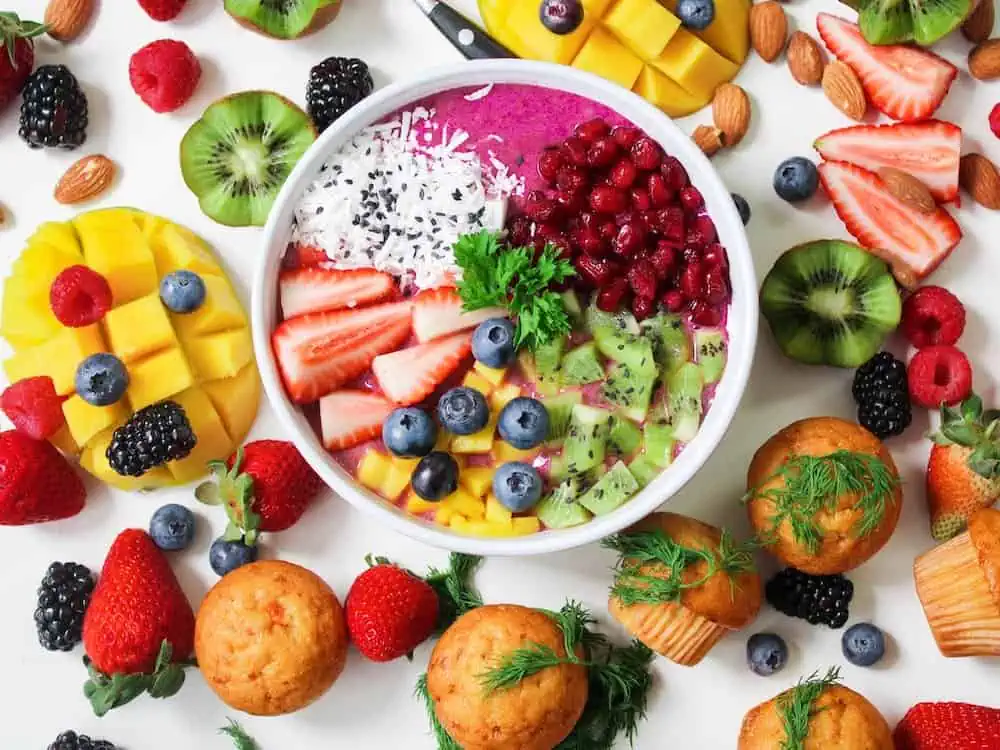
A Favorite Sattvic Recipe : Kitchari
According to ayurvedic principles, people should eat sattvic foods that are warming and full of delicious herbs and spices to stimulate digestion and cleanse the body. This is where Kitchari can be added to a healthy yogic diet.
This delicious recipe inspiration comes from Vidya Living. The ingredients that you will need for this recipe include:
Split mung beans, basmati rice, kombu (seaweed), bay leaves and water for the base. Then, for the sauce, you will need a variety of herbs and spices including ghee, yellow mustard seeds, coriander seeds, turmeric powder, fresh ginger, cumin seeds, fennel seeds, fenugreek, cinnamon and Himalayan pink salt.
Find the full quantities and the recipe method on her website here!
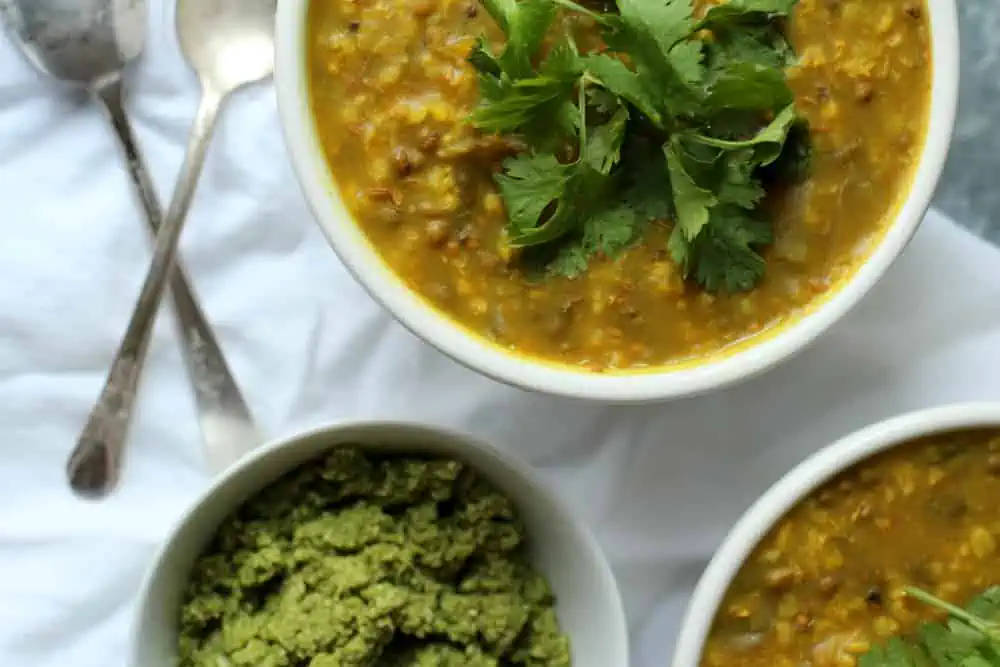
Frequently Asked Questions:
Which fruits are Sattvic?
All fresh fruits are sattvic! Pure fruit juices are also a great choice for cleansing and purifying the body.
Which vegetables are Sattvic?
Most vegetables are sattvic. A few to avoid are mushrooms, onions and garlic as they are said to be rajasic and tamasic which create disharmony in the mind and body. Aside from that, eat a variety of vegetables in balance with the rest of the sattvic diet.
What does a Sattvic diet do to the body?
A sattvic diet balances the body, creates harmony in the physical, mental and spiritual self and helps one to deepen their yogic and meditation practices.
The best way to find out what a Sattvic diet does is to try it for yourself!


